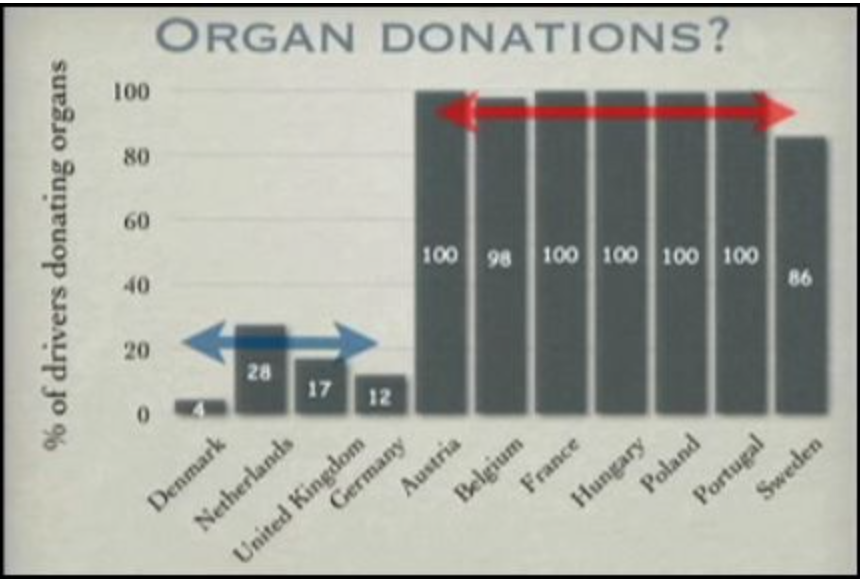Do Your Choices Belong to You?
Thanks for visiting the blog. In my performance, I use psychological illusions to read thoughts, influence actions and predict behaviors for entertainment purposes. But these things happen frequently to all of us in our everyday life. I wanted this blog to explore the means that shape our perception and behavior. I thank you for reading and encourage you to share your thoughts and/or subscribe below.
In mentalism, predictions are a favorite among classic effects: the mentalist seems to be able to accurately guess what you’ll choose before you do so. This can be presented in a couple of manners: classic mentalism presents it as a supernatural power to predict the future (although this presentation is getting less and less popular). My favorite way to present this is to tell the audience what it really is: a combination of trickery and psychological nudges - guiding your decision making in a manner unbeknownst to you -> which brings us to an interesting question: “Do Your Choices Belong to You?”
Decisions:
My partner-in-crime, Apollo Robbins, whose popular TV series Brain Games explored this concept in an entertaining clip:
I really like this clip because it concisely explains how the illusion of choice can happen swiftly under our radar. However, as interesting as it may be to experience this “psychological nudge” in the entertainment arena, our ability to influence you to pick a color (in Apollo’s clip) or a random object (in my show) has little consequence in your daily life. How about choices that really affect you? Such as whether you’d like to donate your organs or the newspaper subscription on which you’d like to spend your money.
Default Popularity:
You may have heard of the popularity of the default choice in decision making. The theory is that when given a decision to make, our brains will prefer the path of least resistance, thus choosing the default choice. This default popularity is so popular that Google has been known to pay Firefox an estimated $100 million a year to be the default search engine (read more about Google’s similar arrangements from Steve Lohr’s NY Times’s article here). And Google is not the only fan of the default: in 2013 Apple launched iOS7 for its mobile phones and tablets. With it came automatic app updates; the default position was that apps would now automatically update themselves unless the user actively asked them not to.
To Donate or Not to Donate:
If you're like me and think that default choosing is simplistic in principle and are still skeptical, let's explore more about how many of our decisions are really based on our preferences and how many depend on how our options are constructed. In his successful TED talk, behavioral economist Dan Ariely gives the example of organ donation. See the chart below:
Why do some countries rank so high on organ donation and others not? Is it cultural? What makes the difference then? It’s the wording of the question. In the willing countries, the question is worded so as to require one to check the box if one does NOT want to donate.
In the less generous countries, it’s the opposite. The question is worded so as to require one to check the box if one does want to donate.
From this example, it seems that we do really prefer to avoid the work of decision-making when possible, thus making the default option the ever reigning king of decisions.
Choice Architecture - Designing Choices to Influence Consumer Behavior
As much as our decisions can be influenced to become prosocial behaviors, such as in the organ donation scenario, they can also be influenced by marketers to increase product purchases for companies. While default options may be the most simple and popular approach of choice architecture, there are also other approaches. One of my favorites is from Dan's book "Predictably Irrational" about the inclusion of an irrelevant choice can influence the customer to spend more. See this clever ad from The Economist Magazine for subscriptions.
The ad offered three subscription options:
Electronic Only: $59
Print Only: $125
Electronic and Print: $125
Which of these 3 choices do you think was most popular? It's very unlikely that people would choose the “Print Only” option rather than opting for the additional “FREE!” electronic subscription? In fact, Ariely conducted a test with 100 Sloan School students and only 16 chose “Electronic Only” while 84 chose the “Electronic and Print” option. No one chose the “Print Only” option! At first look, this option seems unimportant so we often don't even key it into our awareness. So why do they offer it? It turns out that something very interesting happens when this seemingly irrelevant option is eliminated. When another 100 students were offered only two choices: “Electronic Only” and “Electronic and Print”, 68 chose “Electronic Only” while only 32 chose “Electronic and Print.” The presence of an irrelevant option influenced a more than 250% increase in customers choosing the more expensive alternative.
The Illusion of Choice
The subject of free choice and free will is a sensitive one, and most of us get a little uncomfortable thinking about how perhaps we don't have as much control over our decisions as we believe. Are there more small and seemingly insignificant contextual details have a major impact on people’s behavior? What do you think?




